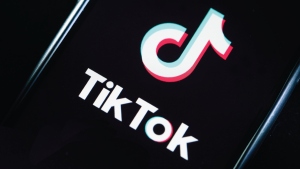
Whether we’re buying a cup of coffee, a new car, or a pair of shoes, our consumer choices reflect not just our preferences but also our values.
In this post, we explore the intersection of consumer behavior and personal values, specifically examining how discretionary and routine transactions offer opportunities for brands to align their consumers’ spending habits with their values.
What Are the Different Types of Transactions?
Are all transactions values-aligned? First, we have to understand what types of transactions there are. Indeed, some are more values aligned where others are not.
Transactions can be categorized in various ways based on the motives behind them and the nature of the goods or services involved. Here are some additional categories to consider:
- Investment Transactions: These transactions involve the purchase of assets with the expectation of generating income or appreciation in value over time, such as stocks, bonds, real estate, or precious metals.
- Discretionary Transactions: These are non-essential purchases made for pleasure, enjoyment, or personal preference, such as luxury goods, entertainment, travel, or hobbies.
- Social Transactions: These transactions are driven by social interactions or obligations, such as buying gifts, dining out with friends, attending events, or participating in group activities.
- Routine Transactions: These are regular, recurring purchases made to maintain daily life or meet ongoing needs, such as groceries, household supplies, transportation, or utilities.
- Impulse Transactions: These transactions are made spontaneously or on impulse without much prior planning or consideration, often influenced by factors like advertising, promotions, or emotional triggers.
- Philanthropic Transactions: These involve charitable giving or donations to support causes, organizations, or individuals in need, motivated by altruism, compassion, or social responsibility.
- Legal Transactions: These involve contracts or agreements for the exchange of goods, services, or assets, typically governed by legal frameworks and enforceable by law.
- Speculative Transactions: These involve high-risk investments or purchases made with the hope of profiting from future price movements or market fluctuations, often associated with speculative trading or gambling.
- Subscription Transactions: These involve recurring payments for access to goods or services over a specified period, such as subscription-based media streaming, software licenses, or membership programs.
- Barter Transactions: These involve the exchange of goods or services directly without the use of money, based on mutual agreement and the perceived value of the items being traded.
- Government Transactions: These involve exchanges with governmental entities, such as paying taxes, receiving benefits, or purchasing government services like permits or licenses.
- Informal Transactions: These encompass exchanges that occur outside formal economic channels, such as bartering, gifting, or informal lending arrangements within communities.
- International Transactions: These involve cross-border exchanges of goods, services, or financial assets, including imports, exports, foreign investment, and remittances.
- Digital Transactions: These encompass transactions conducted electronically through digital platforms, such as online purchases, mobile payments, cryptocurrency transactions, or digital subscriptions.
- Transactional Relationships: These involve ongoing interactions between parties based on repeated transactions, such as customer-client relationships, business partnerships, or contractual agreements.
Two categories in particular are worth further examination – discretionary and routine transactions. These two categories often involve deeper personal considerations and values compared to other types of transactions. Let’s delve into each of these categories in more detail.
Discretionary Transactions
Discretionary transactions refer to non-essential purchases made for pleasure, enjoyment, or personal preference. These are items or experiences that individuals choose to buy based on their desires, interests, or values, rather than out of necessity.
These types of transactions encompass a wide range of purchases, including:
- Luxury goods
- Entertainment
- Hobbies
- Travel
- Dining out
- Other leisure activities
These purchases are typically driven by individual preferences, lifestyle choices, and aspirational desires rather than immediate needs.
Discretionary Purchases: Alignment with Values
Discretionary purchases often reflect and reinforce an individual’s values, beliefs, and identity. People may choose to support brands or products that resonate with their personal values, such as environmental sustainability, social responsibility, innovation, or craftsmanship. By making discretionary purchases, individuals may express their identities, affiliations, or aspirations, signaling their values to others and reinforcing their sense of self.
Routine Transactions
Routine transactions involve regular, recurring purchases made to maintain daily life or meet ongoing needs. These are essential items or services required for survival, comfort, or basic functioning.
Routine transactions encompass purchases such as:
- Groceries
- Household essentials
- Utilities
- Transportation
- Healthcare
- Other basic necessities
These purchases are part of individuals’ daily or weekly routines, often requiring minimal deliberation or conscious decision-making.
Routine Transactions: Alignment with Values
While routine transactions may seem mundane or automatic, they can still reflect individuals’ values and priorities. For example, someone may choose to buy organic food to support their health and environmental sustainability values, opt for eco-friendly household products to reduce their ecological footprint, or invest in public transportation to promote sustainability and community well-being. Even seemingly routine purchases can align with broader values related to health, sustainability, social responsibility, or economic principles.
How Brands Can Utilize Values-Based Approach to Better Align with their Customers
Both discretionary transactions and routine transactions offer opportunities for individuals to express and enact their values through consumer choices. Whether it’s selecting luxury items that reflect personal aspirations or making everyday purchases that support ethical or sustainable practices, consumers often make decisions that align with their core values and beliefs, shaping their identities and influencing broader societal trends.
This is important to know if you are a brand offer products or services in the aforementioned categories. Understanding your customers values can help you connect with them on a deeper level. You can use this information to create new products, use certain materials, form partnerships or alignments, use messaging, campaigns, etc. that are values driven.
Brands have a unique opportunity to connect with consumers on a deeper level by aligning their products with values that resonate with their target audience. Here’s how brands can leverage values-alignment to enhance their offerings and build stronger relationships with customers:
Identify Core Values: The first step for brands is to identify their own core values and principles. What does the brand stand for? What causes or issues are important to its target audience? By understanding their own values, brands can better align their products and messaging with the beliefs and priorities of their customers.
Authenticity is Key: Consumers are increasingly savvy at spotting inauthentic attempts to capitalize on values-based marketing. Brands must ensure that their commitment to values-alignment is genuine and consistent across all aspects of their business, from product development to marketing and customer service.
Communicate Transparently: Transparent communication is essential for building trust and credibility with consumers. Brands should be transparent about their values, sourcing practices, and social or environmental initiatives. Clear and honest communication helps consumers make informed choices and strengthens the brand-consumer relationship.
Create Meaningful Partnerships: Collaborating with like-minded organizations, nonprofits, or influencers can amplify a brand’s values-driven messaging and reach new audiences. By partnering with organizations that share their values, brands can demonstrate their commitment to making a positive impact and inspire consumer loyalty.
Offer Choices that Reflect Values: Brands can empower consumers to make values-aligned choices by offering a range of products that reflect different values and preferences. Whether it’s providing eco-friendly options, supporting fair trade practices, or promoting diversity and inclusion, offering choices that align with diverse values allows brands to cater to the unique needs and priorities of their customers.
Lead by Example: Beyond just offering values-aligned products, brands can lead by example by adopting sustainable and ethical business practices throughout their operations. From reducing carbon emissions to promoting diversity in the workplace, brands that prioritize values-driven initiatives set a positive example for their industry and inspire others to follow suit.
Listen and Adapt: Finally, brands must listen to feedback from their customers and be willing to adapt and evolve their strategies based on changing consumer preferences and societal trends. By staying attuned to the values and priorities of their target audience, brands can continue to build meaningful connections and stay relevant in a competitive marketplace.
Brands that prioritize values-alignment in their products and messaging have the opportunity to not only drive sales but also foster deeper connections with consumers and make a positive impact in the world. By authentically embracing values-driven initiatives and transparently communicating their commitment to social and environmental responsibility, brands can position themselves as trusted allies in their customers’ quest for meaningful and values-aligned consumption choices.
Related Posts
Need help with your marketing activities?
If you’re looking to make a move with your marketing, reach out to us. We are priced fairly, we’re straight shooters, and are the very best at what we do.








